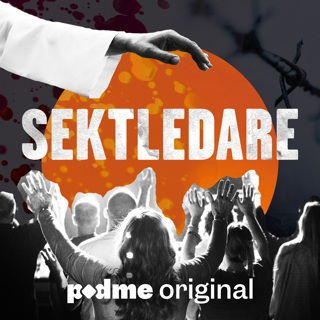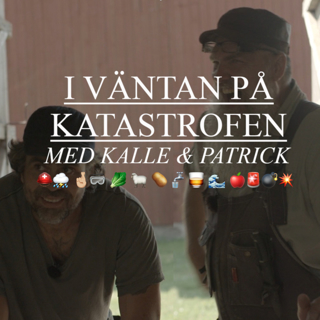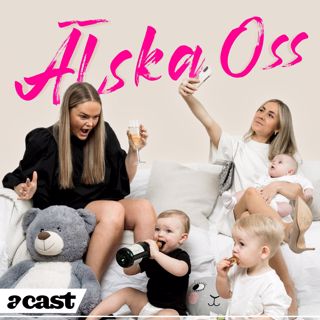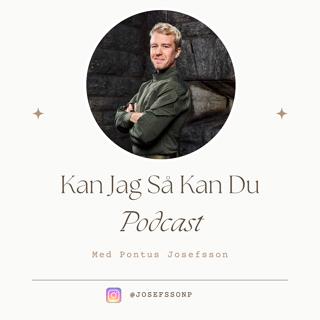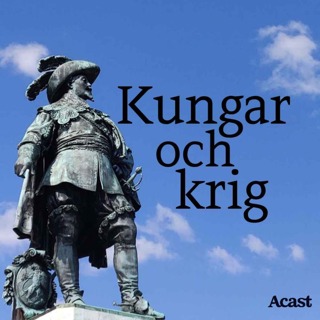
Ep. 418 Acute Limb Ischemia: Timing, Technology, and Triage with Dr. Charles Bailey
In this episode, host Dr. Sabeen Dhand interviews Dr. Charles Bailey about Limb Alert, a hospital protocol devised to expedite the diagnosis and treatment of patients presenting with acute limb ischemia. Dr. Bailey is a vascular surgeon and the Director of Peripheral Artery Disease (PAD) and Limb Salvage at the University of South Florida. Dr. Bailey explains how the Limb Alert program standardizes the care pathway, rapidly alerts necessary personnel, initiates labs, and prepares the Penumbra Lightning Bolt 7 System for endovascular thrombectomy. The incorporated protocol significantly streamlines patient management, resulting in encouraging survival rates. Dr. Bailey further emphasizes the necessity for modern endovascular trials in acute limb ischemia and proposes a multicenter randomized trial to provide evidence for endovascular treatment. --- CHECK OUT OUR SPONSOR Penumbra Lightning Flash https://www.penumbrainc.com/products/lightning-flash/ --- SHOW NOTES 00:00 - Introduction 02:43 - Dr. Bailey’s Journey to Florida and His Practice 06:43 - Importance of Timely Intervention in Acute Limb Ischemia 21:29 - Role of Debulking in Acute Limb Ischemia 28:20 - Tips and Tricks for Successful Outcomes 31:17 - Impact of the Limb Alert Program 41:19 - Future of Acute Limb Ischemia Treatment 47:40 - The Need for New Randomized Trials --- RESOURCES Acute Limb Ischemia: An Update on Diagnosis and Management: https://www.ncbi.nlm.nih.gov/pmc/articles/PMC6723825/ Safety and efficacy of mechanical aspiration thrombectomy at 30 days for patients with lower extremity acute limb ischemia - STRIDE Study: https://www.jvascsurg.org/article/S0741-5214(23)02196-1/fulltext
20 Feb 202451min

Ep. 417 IR Training: Perspectives and Expectations with Dr. Thomas P. Sullivan
In this episode of the BackTable Podcast, host Dr. Aaron Fritts interviews guest Dr. Thomas Sullivan about the findings from a recent survey exploring the reasons behind professional job changes among interventional radiologists. Dr. Sullivan is the Assistant Program Director of Diagnostic and Integrated Interventional Radiology Residency programs at Wake Forest University. Dr. Sullivan highlights the importance of mentorship during residency and notes the huge impact of geography and financial compensation in determining job satisfaction and longevity in a role. He also discusses some surprising insights about trainee expectations of future practice settings, the need for a variety in practice caseload, and the desire for about 80% of clinical time to be spent on dedicated IR activities. The conversation also delves into the challenges of equipping residents for rural practice and the potential value of developing a procedural radiology curriculum. Dr. Sullivan anticipates that the survey results will help improve and adapt training paradigms to better align with the evolving landscape of interventional radiology practice. --- CHECK OUT OUR SPONSOR RADPAD® Radiation Protection https://www.radpad.com/ --- SHOW NOTES 00:00 - Introduction 02:50 - Discussion on IR Training and Practice 04:51 - Survey Discussion and Key Findings 16:47 - Importance of Diagnostic Skills in IR 19:01 - Deciding Factors for First Job After Training 21:04 - Need for Medical Services in Rural Settings 25:23 - Role of Mentorship in Job Seeking 28:21 - Importance of Networking in Career Development 32:37 - Future of IR Training and Practice 38:23 - Role of BackTable in IR Training --- RESOURCES SIR 2024 Monday Session (3:27 PM - 3:36 PM MT): Trainee perceptions of current IR workforce: Are we setting our residents up for failure? With Dr. Thomas Sullivan: https://www.sirmeeting.org/fsPopup.asp?PresentationID=1348792&mode=presInfo
16 Feb 202443min

Ep. 416 PAE in the OBL with Dr. Charles Nutting
In this episode of the BackTable Podcast, host Dr. Michael Barraza interviews guest Dr. Charles Nutting about prostatic artery embolization (PAE) in the outpatient-based lab (OBL) setting. Dr. Nutting is an interventional radiologist at Endovascular Consultants in Lone Tree, Colorado. The doctors discuss procedure techniques, patient selection, follow-up care, and benefits of the OBL environment over the hospital. Dr. Nutting emphasizes that it is important to learn PAE in a hospital setting before transitioning to the OBL. He recommends using consistent equipment to help with the learning process. Dr. Nutting also shares his experience with radiopaque beads in PAE and describes the advantages of seeing the deposition of the beads into the gland. The doctors discuss the potential impact of the 2023 American Urological Association (AUA) Guidelines, which for the first time recognizes PAE for the treatment of symptomatic benign prostatic hyperplasia (BPH), and what this might mean for patient volume and interventional radiology training. --- CHECK OUT OUR SPONSOR Varian, a Siemens Healthineers company https://www.varian.com/products/interventional-solutions/embolization-solutions --- SHOW NOTES 00:00 - Introduction 03:03 - Impact of New AUA Guidelines on PAE 04:48 - Benefits of PAE for Patients 06:37 - Role of Primary Care Physicians in PAE 08:18 - Practice of PAE in the OBL 19:08 - Role of Urodynamic Studies 22:23 - Challenges of Treating Small Glands 26:11 - Procedure Steps and Techniques 34:19 - Post-Procedure Care and Follow-up 38:33 - The Future of Prostate Embolization --- RESOURCES Management of Lower Urinary Tract Symptoms Attributed to Benign Prostatic Hyperplasia (BPH): AUA Guideline Amendment 2023: https://www.auanet.org/guidelines-and-quality/guidelines/benign-prostatic-hyperplasia-(bph)-guideline Efficacy and safety of prostate artery embolization for benign prostatic hyperplasia: an observational study and propensity-matched comparison with transurethral resection of the prostate (the UK-ROPE study): https://pubmed.ncbi.nlm.nih.gov/29645352/ NICE - Prostate artery embolisation for lower urinary tract symptoms caused by benign prostatic hyperplasia: https://www.nice.org.uk/guidance/ipg611 Yttrium-90 Radioembolization in the Office-Based Lab: https://pubmed.ncbi.nlm.nih.gov/32800662/ Role of Urodynamic Studies in Management of Benign Prostatic Obstruction: A Guide for Interventional Radiologists: https://www.jvir.org/article/S1051-0443(16)30520-6/fulltext International Prostate Symptom Score (IPSS): https://www.urologygroup.com/wp-content/uploads/2019/07/IPSS-Form-Before-Tx-_-BPH.pdf
13 Feb 202446min

Ep. 415 Thyroid Ablation: Efficacy, Safety, and Procedure Overview with Dr. Gary Tse
In this episode of the BackTable Podcast, host Dr. Chris Beck interviews guest Dr. Gary Tse about the innovative technique of thyroid ablation and its role in treating benign thyroid nodules. Dr. Tse is a practicing interventional radiologist at UCLA Health. Dr. Tse highlights the procedural details, patient experiences, potential complications, and follow-up protocols of thyroid ablation. He emphasizes the importance of consistent communication with patients during these procedures, given that the patients are under minimal anesthesia. He explains how interventional radiologists can benefit from embracing this procedure due to their expertise in ultrasound usage, as it leads to reduction in recovery times and complications for patients. Dr. Tse also briefly discusses the future potential of thyroid embolization for larger goiters. He encourages other IR specialists to consider adopting this procedure, which he believes should become a standard of care. --- CHECK OUT OUR SPONSORS Siemens Healthineers https://www.siemens-healthineers.com/ Varian, a Siemens Healthineers company https://www.varian.com/products/interventional-solutions/embolization-solutions --- SHOW NOTES 00:00 - Introduction 04:03 - Dr. Tse’s Career Journey and Transition to Academics 06:32 - Discussion on Thyroid Interventions 09:15 - Building Referral Patterns for Thyroid Interventions 11:50 - Thyroid Ablation Procedure Overview 21:23 - Post-Ablation Outcomes and Goals 25:52 - Avoiding Complications 32:55 - Post-Procedure Follow-Up 36:14 - Exploring Thyroid Embolization 42:23 - Final Thoughts and Future Prospects --- RESOURCES 2017 Thyroid Radiofrequency Ablation Guideline: Korean Society of Thyroid Radiology: https://www.ncbi.nlm.nih.gov/pmc/articles/PMC6005940/ Recurrent Laryngeal Nerve Injury in Thermal Ablation of Thyroid Nodules-Risk Factors and Cause Analysis: https://pubmed.ncbi.nlm.nih.gov/35311971/ Effectiveness of Injecting Cold 5% Dextrose into Patients with Nerve Damage Symptoms during Thyroid Radiofrequency Ablation: https://doi.org/10.3803/EnM.2020.35.2.407 Revisiting Rupture of Benign Thyroid Nodules after Radiofrequency Ablation: Various Types and Imaging Features: https://doi.org/10.3803/EnM.2019.34.4.415 Thyroid arterial embolization to treat Graves' disease: https://pubmed.ncbi.nlm.nih.gov/17354140/ Thyroid Embolization for Nonsurgical Treatment of Nodular Goiter: A Single-Center Experience in 56 Consecutive Patients: https://www.jvir.org/article/S1051-0443(21)01212-4/fulltext#%20
9 Feb 202445min

Ep. 414 HeRO Grafts in Dialysis: Techniques, Challenges, and Solutions with Dr. Jason Wagner
In this episode, host Dr. Chris Beck interviews Dr. Jason Wagner about his experience with using the Hemodialysis Reliable Outflow (HeRO) graft and the Surfacer system for treating patients with end stage renal disease (ESRD) and limited vascular access options. Dr. Wagner is a practicing vascular surgeon in Sarasota, Florida. Dr. Wagner explains the steps to implant a HeRO endovascular graft, how it provides a durable and reliable outflow for hemodialysis patients, and how it can be used and revised based on the patient’s needs. He also discusses the Surfacer system in obtaining central venous access, its advantages, and the necessity of preoperative imaging. Dr. Wagner emphasizes the critical role of continued learning in utilizing and optimizing these advanced dialysis solutions. The suggestions and other information, which may include Merit products, are for the practitioner’s convenience and for general information purposes only. This information does not constitute medical or legal advice. Before using, refer to the Instructions for Use (IFU) for indications, contraindications, warnings, precautions, and directions for use. --- CHECK OUT OUR SPONSOR Merit HeRO Graft https://www.merit.com/product/merit-hero-graft/ --- SHOW NOTES 00:00 - Introduction 02:25 - Dr. Wagner’s Experience in Vascular Surgery 05:49 - Understanding End-Stage Vascular Access 08:52 - Introduction to the HeRO Graft 16:15 - Implantation of the HeRO Graft 28:38 - The Surfacer: A Game Changer in Vascular Access 31:49 - Potential Risks and Precautions with the Surfacer 33:38 - Using Both HeRO Graft and Surfacer 36:31 - Final Thoughts and Resources on Both Devices --- RESOURCES Think Dialysis Access Course from Merit: https://www.merit.com/education/courses/thinkaccess/ HeRO Graft: Indications, Technique, Outcomes, and Secondary Intervention: https://www.ncbi.nlm.nih.gov/pmc/articles/PMC8856774/ KDOQI Clinical Practice Guideline for Vascular Access: 2019 Update: https://pubmed.ncbi.nlm.nih.gov/32778223/ The Surfacer: https://bluegrassvascular.com/surfacer-2/
6 Feb 202445min

Ep. 413 TBAD Management: Best Practices in Aortic Dissection with Dr. Darren Klass
This week on the BackTable Podcast, Dr. Darren Klass shares his experiences in the treatment of aortic dissections. Dr. Klass is an interventional radiologist at the University of British Columbia. Dr. Klass underscores the criticality of intraoperative decision-making, the use of intravascular ultrasound (IVUS), and the importance of taking a multidisciplinary approach. The conversation further explores the nuances of treating acute complicated aortic dissections, stabilizing the intermedial flap, follow-up protocols, and the importance of raising awareness about this high risk disease. --- CHECK OUT OUR SPONSOR Cook Medical Aortic Interventions https://www.cookmedical.com/aorticbacktable --- SHOW NOTES 00:00 - Introduction 07:45 - Identifying and Treating Type B Aortic Dissections 09:35 - Role of Imaging 18:24 - Patient Journey Through Aortic Dissection Treatment 29:35 - Importance of Intravascular Ultrasound 39:01 - Petticoat Technique 47:12 - Role of Lumbar Drains 50:10 - Importance of Follow-ups --- RESOURCES Cook Medical Essential Prescribing Information: https://www.cookmedical.com/patient-resources/aortic-dissection/aortic-dissection-cook-medical-products/ Dr. Darren Klass’ ResearchGate Profile: https://www.researchgate.net/profile/Darren-Klass The Society of Thoracic Surgeons/American Association for Thoracic Surgery Clinical Practice Guidelines on the Management of Type B Aortic Dissection: https://www.sts.org/sites/default/files/content/TBAD_Guideline_2022.pdf Krukenberg E. Beiträge zur Frage des Aneurysma dissecans. Beitr Patho Anat Allg Pathol. 1920; 67:329-351. (Paper that first described acute intramural hematoma from 1920): https://cir.nii.ac.jp/crid/1571698600607606272 Acute Aortic Dissection and Intramural Hematoma: A Systematic Review: https://pubmed.ncbi.nlm.nih.gov/27533160/ The PETTICOAT Technique for Complicated Acute Stanford Type B Aortic Dissection Using a Tapered Self-Expanding Nitinol Device as Distal Uncovered Stent: https://pubmed.ncbi.nlm.nih.gov/28279721/
2 Feb 202457min

Ep. 412 Intervencionismo Pediátrico: No Kits For Peds with Dr. Fernando Gómez Muñoz
En este nuevo episodio de BackTable, el Dr. Fernando Gómez Muñoz y la Dra. Sara Lojo Lendoiro profundizan en el complejo y específico campo de la radiología intervencionista pediátrica. Al enfatizar las diferencias existentes entre los pacientes adultos y los niños, el Dr. Gómez Muñoz destaca la necesidad de capacitación y enfoques especializados para el manejo de casos pediátricos, especialmente en términos de variantes propias de la edad del paciente como la volemia o el tamaño de los vasos. Se examinan críticamente los desafíos en los procedimientos intervencionistas, particularmente en relación con las complejidades propias del trabajo con pacientes pediátricos y la dificultad añadida de los materiales necesarios. Además, el Dr Gómez Muñoz comparte su trayectoria profesional, su paso por el Great Ormond Street Hospital de Londres y su continuo aprendizaje de colegas de todo el mundo. En el podcast también se explora la necesidad de una colaboración multidisciplinar y se analiza la relación entre los radiólogos intervencionistas y los cirujanos pediátricos. Se subraya la importancia de una comunicación clara con las familias de los pacientes durante procedimientos o diagnósticos particularmente complejos, afirmando que la atención al paciente comienza con el manejo de las emociones y expectativas de los propios médicos. --- SHOW NOTES 00:00 - Introducción a la radiología intervencionista pediátrica 01:27 - Comprender las diferencias entre pacientes adultos y pediátricos 03:08 - Desafíos en radiología intervencionista pediátrica 08:29 - El papel de la formación y la especialización 13:25 - Cómo afrontar las emergencias médicas pediátricas 19:02 - La importancia del enfoque multidisciplinario en la atención pediátrica 26:23 - El futuro de la radiología intervencionista pediátrica 42:44 - Conclusión: La importancia de la radiología intervencionista pediátrica
31 Jan 202444min

Ep. 411 Innovating Pain Management: The Role of Spinal Cord Stimulators in Outpatient Care with Dr. Douglas Beall
In this episode, guest host Dr. Dana Dunleavy and guest Dr. Douglas Beall delve into the transformative potential of neuromodulation in the treatment of chronic pain, particularly for painful diabetic neuropathy (PDN). Dr. Beall is an interventional musculoskeletal radiologist practicing at Oklahoma Spine in Edmond, Oklahoma. Dr. Beall recounts his journey, from his beginnings in the military to his experiences with navigating institutional resistance to his clinical practice, and finally the process of moving to private practice. He discusses the positive impact of spinal cord stimulation on patients with PDN and reflects on its effectiveness in reducing pain and improving neurologic function. He underscores the crucial role of interventional radiologists in managing PDN, while also advocating for the integration of these specialists in pain management clinics. Dr. Beall argues that interventional radiologists possess unique skill sets adept for neuromodulation, which opens up new treatment possibilities in the process. He shares insights on the evolution of spinal cord stimulation technology, reimbursement considerations, and the importance of clinical trials in refining treatment approaches. The episode ends with an invitation for interested physicians to participate in professional forums and learn more about this burgeoning field. --- CHECK OUT OUR SPONSOR Nevro HFX Spinal Cord Stimulator https://www.hfxforpdn.com --- SHOW NOTES 00:00 - Introduction 02:30 - Challenges and Triumphs of a Solo Practice 14:44 - Evolution of Neuromodulation in Practice 17:05 - Impact of Neuromodulation on Painful Diabetic Neuropathy 31:53 - Unique Mechanism of High Frequency Neuromodulation 46:02 - Role of Interventional Radiologists in Neuromodulation 54:11 - Future of Neuromodulation in Interventional Radiology --- RESOURCES Douglas Beall, MD Research Gate Profile: https://www.researchgate.net/scientific-contributions/Douglas-P-Beall-39583252 Long-term efficacy of high-frequency (10 kHz) spinal cord stimulation for the treatment of painful diabetic neuropathy: 24-Month results of a randomized controlled trial: https://pubmed.ncbi.nlm.nih.gov/37536514/ High-Frequency 10-kHz Spinal Cord Stimulation Improves Health-Related Quality of Life in Patients With Refractory Painful Diabetic Neuropathy: 12-Month Results From a Randomized Controlled Trial: https://www.ncbi.nlm.nih.gov/pmc/articles/PMC9256824/ Neuromodulation Interventions for the Treatment of Painful Diabetic Neuropathy: a Systematic Review: https://link.springer.com/article/10.1007/s11916-022-01035-9 High-frequency spinal cord stimulation at 10 kHz for the treatment of painful diabetic neuropathy: design of a multicenter, randomized controlled trial (SENZA-PDN): https://link.springer.com/article/10.1186/s13063-019-4007-y
29 Jan 20241h 4min







